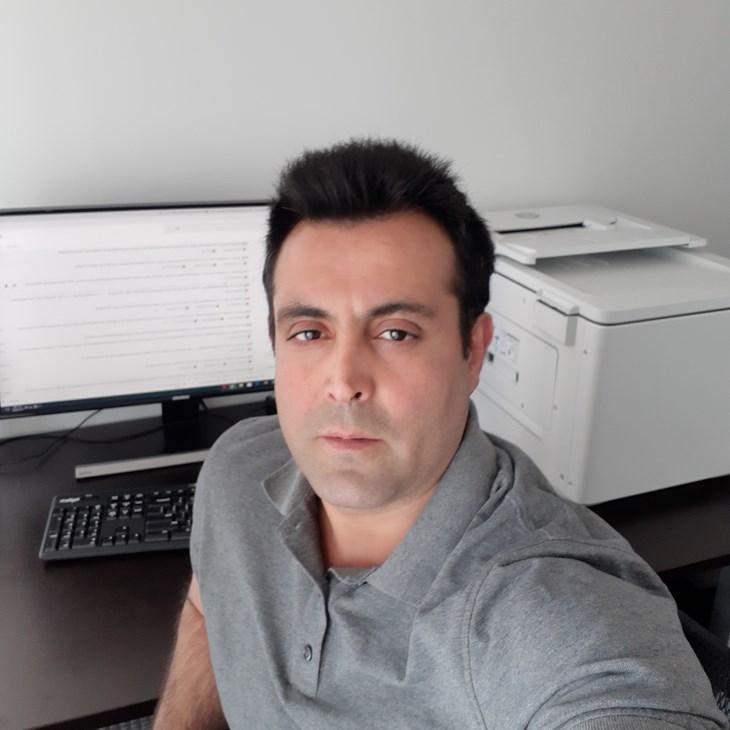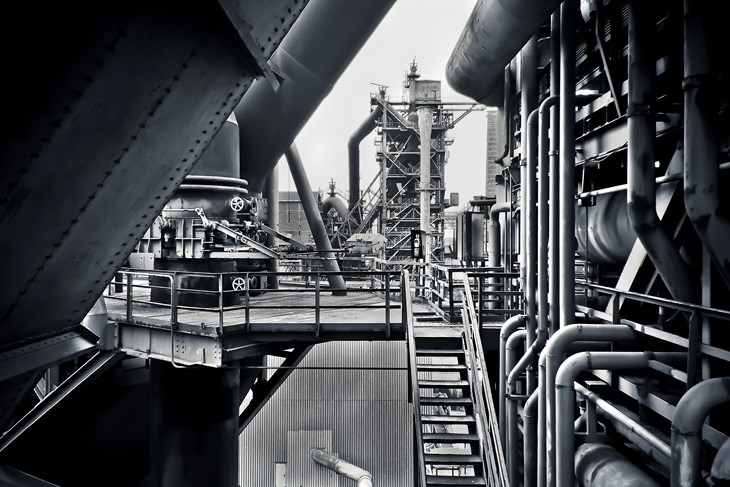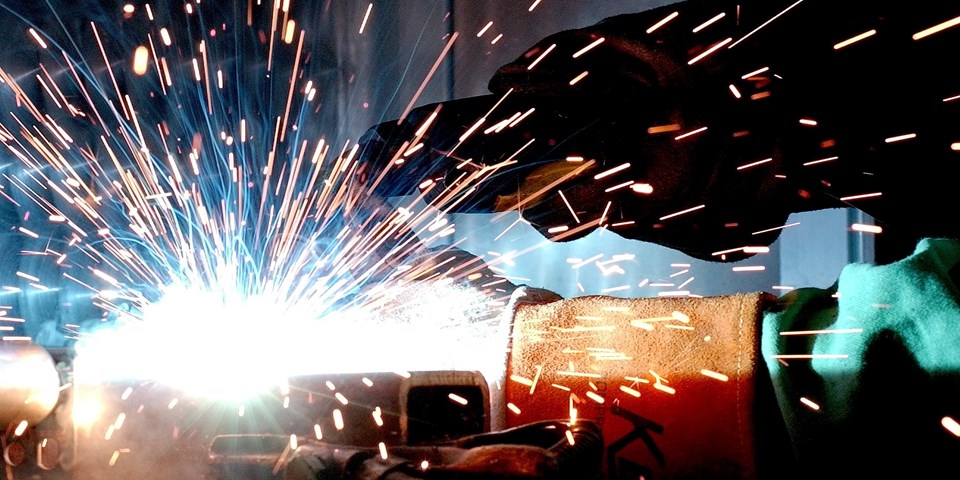Stainless Steel World Americas recently had the opportunity to speak with Ahmadi about his experiences in Iran and Canada, the welding techniques he uses in his work, and what he sees for the future of engineering.
By Brittani Schroeder.
Mehran Ahmadi graduated from Imam Hossein University in Tehran with a degree in mechanical engineering almost 20 years ago, and quickly followed it with a Masters of Mechanical Engineering at the University of Tehran. He worked for over a decade in Iran on a national oil and gas project, and worked with a variety of materials for piping and instrumentation. “I moved to Canada six years ago, and I have held a lot of different roles in mechanical engineering. I also got my Professional Engineer license of Ontario two years ago,” Ahmadi relays.
Ahmadi’s current role is as a Product and Safety Manager. “In this role, I design various equipment – cranes, machines, pumps, equipment conveyors, and pipping – for a range of industries,” he explains. “As the Safety Manager, I am responsible for ensuring the equipment will run safely by following various sets of standards. I am also responsible for the safety of the workers, which is paramount, especially during the COVID-19 pandemic.”
In Ahmadi’s line of work, he does not see a typical working day. Instead, he has a routine for each new product or piece of equipment he designs. “My role includes a lot of new designs, selecting materials, programming machines, making calculations and safety provisions, looking at codes and standards, and working with software,” says Ahmadi. “I really enjoy all the work because it means I am creating new things – something I believe every human has come to this earth to do.”
Ahmadi faces a host of challenges in his job as well, but the biggest challenge he faced was moving from Iran to Canada. “When I came to Canada, I had to learn new standards, new codes, and work in a completely new environment. After a while, I found all the concepts to be the same, so I worked hard and appreciated getting to work with something new,” he continues.
Specialty alloys
Throughout his career, Ahmadi has worked with a variety of materials. “I work with stainless steel – mostly types 304 and 316 – a lot. I have seen my fair share of duplex stainless steels, as well as nickel-based alloys like Inconel,” he says. If Ahmadi could make some improvements to these materials, especially stainless steel, he would wish for higher durability. “Ferritic and martensitic are two newer types of stainless steels, and they have improved on the older forms of the material. They are strong, durable, tough – and the industry needs to have all of these qualities available to them.”
As a welding engineer, Ahmadi is certified to perform a variety of welding procedures, including, but not limited to:
- TIG (gas tungsten arc welding, also known as tungsten inert gas welding);
- MIG (gas metal arc welding, sometimes referred to by its subtypes metal inert gas welding);
- Stick (shielded metal arc welding, also known as manual metal arc welding); and,
- SAW (Submerged arc welding).
Ahmadi knows that each metal has its own set of requirements for welding. “Stainless steel, for example, has some precautions that need to be followed that are very different from other metals. It is not as easy to weld as carbon steel,” he explains. “Carbon steel needs a lot of heat for welding, whereas stainless steel needs less heat input, or it can lead to defects and failures. Carbon steel also needs preheat, and stainless is never preheated.” Stainless steel welds need to be very clean, which means TIG welding is most commonly used, due to the protective gases applied to the metal. SAW, in contrast, could not be used on stainless steels because of the preheating.
Sourcing materials like stainless steels and duplexes can take longer than sourcing more common materials. “Most often, these materials are coming from the United States, and sometimes they can take a long time to get to us. There was one project that I needed stainless steel perforated sheet, and it was going to take over a month to get to us. Martensitic and duplex stainless steels are not used for every project, so sometimes fabrication delays lead to extended lead times, which can delay a project. It is really important to take that delivery time into consideration when planning out a project’s schedule,” says Ahmadi. In some cases, Ahmadi has had to change the design of the product so that he could avoid extended lead times brought on by mills and fabrication shops.

Industrial instrumentation
Throughout his career, Ahmadi has designed different types of heat exchangers, boilers, rotary blowers, filters, fan and silencers, pumps, piping systems, welding structures, pressure vessels, and more. He has performed engineering calculations on the strength of materials, speeds, horsepower, temperature, pressure, force, and other variables related to machinery and tool designs. He has also become very familiar with a wide variety of design software, such as Solidworks, AutoCAD, and MathCad.
“One of the most important instruments in a piping system is the pumps, so I have designed my fair share. I have experience with inline pumps, centrifugal pumps, vacuum pumps, and so much more. I have designed a lot of pump skids for a variety of different projects. Basically, everything from the pump type, to material selection, to the P&IDs, is all up to me,” Ahmadi shares.
During process and piping fabrication and design, Ahmadi has used a variety of different valves, including gate valves, globe valves, solenoid valves with different types of actuators and controls – mostly electrical – controlled by PLC. He was also responsible for programming and monitoring the systems.
A wealth of experience
With his decades of experience, Ahmadi has played many roles in the industrial sector. “I have managed, supervised, verified, and worked alongside my colleagues for many projects; everything from the concept to the physical work,” he relays. “I have experience working with a range of engineering standards and codes, such as ASME, ASHRAE, ASTM, AWS, and CSA. I have verified drawing packages against customer documentation, to recognize when there is non-conformance, and to ensure fluency in the manufacturing flow and implementation.”
Ahmadi has worked on several projects in corrosive environments that required the best corrosion resistant alloys (CRAs). “There was one project I worked on in Quebec where we fabricated a silencer to meet the sound requirements set out by the Ministry of Labor. We needed to make sure it was structurally safe, and there were a lot of aspects and requirements that needed to be met on that project,” says Ahmadi.
He also performed the structure and piping design for an EPC project for a power plant that was to have steam boilers. “I was concerned with the construction of the HVAC systems and other various equipment,” explains Ahmadi. “I created the mechanical designs for the equipment – pressure vessels, storage tanks, pumps, chillers, cooling towers, vacuum station, etc. I was also leading the work on the piping design, and the layout of the equipment. It was a lot of work, but a lot of fun.”
“One of my hardest projects was welding nickel alloys,” says Ahmadi. “Welding nickel alloys, like Inconel, needs to be very precise, and you need to have the proper heat input, along with other variables. I had not worked on anything like it before, and it was just a trial and error exercise until we figured it out.”

The future of engineering
Nowadays, Ahmadi sees a lot of automation and the use of new software in the industry. “Just as an example, vehicle manufacturing was more or less the same for almost 100 years. In the last 10 years, however, we have made leaps and bounds in that field,” he explains. “The same can be said for new metals. When the need for a new material emerges, it can be created much easier than in the past. Do you need a higher strength metal? It can be made for you! Does it need to be durable but also have excellent weldability? It can be done. New technologies and information make everything simpler; there are no boundaries or limitations for humans now. We can create whatever we want.”
Being able to create new materials and components helps to solve the issue of obsolete parts in the industrial sector. “As we improve the technology, we can create new equipment, new devices, valves, pumps, and so much more. By the time a part becomes obsolete, there are so many new options to choose from,” says Ahmadi.
As the industry grows, so will the demand for engineers and welders. He continues, “We want to go to Mars these days, and to build the spaceships to get us there will take engineers and welders. As we find ways to bring in renewable energy, engineers will be needed. There is a constant need to innovate and create, and we need skilled mechanical engineers for this. So, to the young engineers coming into the industry, take in all the knowledge and experience you can, so that you can help us move into the future.”


